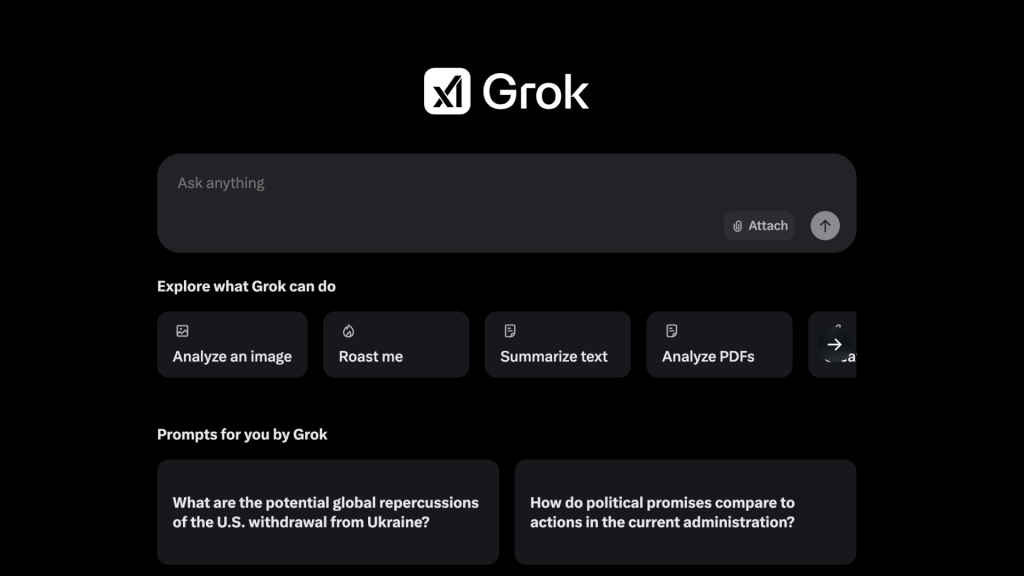Grok-3: xAI’s bold move in AI evolution

Artificial intelligence is in a constant arms race, with each new model trying to outthink, outlearn, and outmaneuver its predecessors. xAI’s latest creation, Grok-3, steps into this digital battlefield – not as a revolutionary disruptor, but as a meticulously refined machine honed for deeper reasoning and contextual mastery. This isn’t about AI simply getting “smarter”; it’s about making AI more methodical, precise, and adaptable.
 Survey
SurveyThink of AI development like an escalating chess match, where each move builds on centuries of strategy. With Grok-3, xAI has made its latest gambit – investing in an infrastructure so immense that it required 100,000 NVIDIA H100 GPUs to train. But does all this computational muscle translate to a game-winning strategy? And where does Grok-3 stand in the broader AI landscape? Let’s break down the mechanics behind its design, performance, and potential impact.
Understanding Grok-3
Grok-3 is the third iteration of xAI’s advanced AI models, built with an emphasis on complex reasoning and high-level problem-solving. Unlike previous versions, which were primarily designed to improve chatbot interactions, Grok-3 aims to function as a sophisticated reasoning engine capable of tackling multi-step logical problems and contextual synthesis.

Its development has been fueled by an unprecedented computational infrastructure. Utilizing 100,000 NVIDIA H100 GPUs, xAI leveraged one of the most powerful AI training systems in the world – Colossus – to train Grok-3. This immense computing power enabled the model to ingest vast amounts of data and refine its responses to a level of precision that was previously unattainable. Compared to its predecessor, Grok-2, this new iteration required a tenfold increase in computational resources, highlighting the intensifying demands of AI advancement.
Benchmarking Performance
One of the most telling aspects of Grok-3’s capabilities lies in its benchmark performance. The model has achieved over 1,400 points on the Chatbot Arena leaderboard, setting a new record in AI model evaluations. This surpasses previous benchmarks held by models such as DeepSeek-R1, marking Grok-3 as a leader in high-level reasoning and contextual awareness.
In my testing it was at least as good in thinking mode then o3-full deep research was, despite that not being listed here – Interesting to note that grok-3mini seems generally better than full, my guess is that this means they didnt distill full into mini like I assume OpenAI… pic.twitter.com/WbmZRcUylr
— Teknium (e/λ) (@Teknium1) February 18, 2025
In direct comparison to OpenAI’s top-tier models, Grok-3 performs on par with premium offerings, demonstrating competency in complex problem-solving tasks that many existing models struggle with. One of the most notable achievements is its ability to correctly handle intricate logical challenges, such as generating structured mathematical outputs or analyzing ambiguous prompts with human-like nuance.
What Sets Grok-3 Apart?
As claimed by Musk and Co., unlike traditional models that rely heavily on pattern recognition, Grok-3 incorporates a suite of optimizations aimed at enhancing logical deduction, multi-step problem-solving, and dynamic knowledge retrieval. It’s an adaptable AI system designed to process complex information with unprecedented accuracy. Here’s what makes Grok-3 stand out:
Advanced reasoning and multi-step thought processes
Unlike conventional models that rely on surface-level pattern recognition, Grok-3 employs deeper reasoning techniques, as we have seen on ChatGPT and DeepSeek. It can simulate multi-step logical deductions, allowing it to solve problems that require complex inference. This is particularly evident in mathematical reasoning and game theory applications, where structured problem-solving is critical.
Enhanced DeepSearch functionality
One of the core features of Grok-3 is its ability to conduct in-depth searches across vast data repositories. Unlike standard search-enhanced models that rely on summarizing existing sources, Grok-3 employs a dynamic approach – scanning, interpreting, and synthesizing data to form unique insights. While this function still faces occasional inaccuracies, its ability to parse extensive information sets it apart from competitors.
— xAI (@xai) February 18, 2025
Optimized model efficiency and response calibration
Grok-3 is designed to be more energy-efficient than its predecessors, optimizing the trade-off between computational power and performance. By refining its training approach, xAI has managed to create a model that not only surpasses prior benchmarks but does so with improved inference efficiency, reducing latency in responses while maintaining accuracy.
Challenges and ethical considerations
Despite its promising advancements, Grok-3 is not without its challenges. As AI models become more sophisticated, ethical and regulatory concerns grow in parallel. Issues such as misinformation, biased outputs, and the potential misuse of AI-generated content remain pressing concerns.
Additionally, the reliance on massive computational resources raises questions about sustainability. Training AI models at this scale demands immense energy consumption, necessitating discussions around the environmental impact of large-scale AI development.
What’s next for Grok-3?
Looking forward, xAI is expected to refine Grok-3 further, addressing its current limitations and expanding its real-world applications. The company is likely to collaborate with research institutions and enterprises to integrate the model into practical solutions, ensuring that its potential is fully realized.
Moreover, with AI regulation becoming a global priority, xAI will need to navigate evolving policies surrounding AI safety, ethical considerations, and responsible deployment.
Team Digit
Team Digit is made up of some of the most experienced and geekiest technology editors in India! View Full Profile